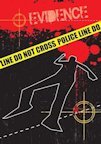Whenever there’s a terrible, mass shooting, like Umpqua or San Bernardino, leave it to the pro-gun gang to wait 48 hours or so, and then remind us that it’s not such a big deal because: a) mass shootings only account for a tiny fraction of all gun shootings; b) gun homicides continue to decline; and, c) there’s nothing we can do about it anyway, so who really cares? And in case a little more juice is necessary to push the argument away from the problems caused by guns, we can always count on Johnny-boy Lott to pronounce that, once again, a mass shooting took place in a gun-free zone.
 But of course if you bother to look at the numbers on gun violence, and you take some time to understand what the numbers really mean, you don’t need to be a rocket scientist to quickly figure out that this whole notion that gun violence being on the wane is simply and irretrievably not true. And anyone who says otherwise either doesn’t know the facts or thinks that if you tell a lie enough times maybe someone will think you are telling the truth. So let’s start with the facts.
But of course if you bother to look at the numbers on gun violence, and you take some time to understand what the numbers really mean, you don’t need to be a rocket scientist to quickly figure out that this whole notion that gun violence being on the wane is simply and irretrievably not true. And anyone who says otherwise either doesn’t know the facts or thinks that if you tell a lie enough times maybe someone will think you are telling the truth. So let’s start with the facts.
Gun violence is falls into five categories, according to the CDC: intentional homicide, unintentional homicide, intentional injury, unintentional injury and suicide. And I don’t care about the NRA nonsense that ‘guns don’t kill people, people kill people;’ the fact is that every one of the events which are counted in those five categories occurred because of the presence of a gun. Now obviously you can kill other people or yourself without using a gun; ditto for injuries suffered by yourself or someone else. But you can’t kill anyone as quickly as you can when you use a gun, and gun injuries are, medically-speaking, the most damaging and costly injuries of all. So now let’s really get to the facts.
In 2001, the total body count for the five gun-violence categories was 92,031, of whom 29,821 ended up one way or another in the morgue, and the remainder, 62,210, lived to see another day. Now the physical and mental condition in which these survivors actually continued their lives has never been calculated in any general sense, but a not atypical example is provided by the experience of Antonius Wiriadjaja who was hit by a stray bullet in Brooklyn, from which he then endured seven months of physical therapy to regain basic functions, along with 18 months of psychiatric treatment to prevent the onset of PTSD. Gun injuries are devastating, the costs of gun morbidity is calculated to be at least 40% higher than the cost of treating any other kind of injury, and Wiriadjaja got off with less post-injury trauma than a lot of other victims of gun wounds.
The pro-gun nation is up in arms (hopefully not literally) because the President keeps referring to gun violence as an ‘epidemic.’ Would the same bunch argue with the notion that we had an outbreak of the Ebola epidemic in 2014? Of course not. Know how many people died worldwide from Ebola that year? Roughly 30,000. Isn’t that roughly the same number that have died from a gun injury in the United States every year over the past 30 years?
Not only do we suffer this carnage year after year, but the numbers keep going up! In 2001 all gun deaths and injuries totaled 92,031. It was 99,968 in 2005, dropped down to 97,550, then steadily increased to 117,146 in 2013. This 25% increase in the overall number is largely driven by intentional injuries, which since 2001 have exoanded by nearly 50%
Know who benefits from this trend in a rather perverse way? Trauma surgery residents get more training which means they can save more lives. It’s their skills that are keeping gun deaths fairly constant while overall gun violence continues to increase. The President isn’t wrong when he talks about a gun epidemic. If anything, he’s understating the case.





Recent Comments